John Hurrell – 7 December, 2012
I'm surprised the notion lampooned here by artist/curator James R Ford has any currency at all, but still it lingers - as evidenced by recent performance works like those by Mark Harvey and Søren Dahlgaard at St Paul St and Te Tuhi, or Jim Allen's recreated 'Body Articulation/Imprint, Part 3, Contact,' where messy paint as a source of slapstick humour extends to the branch of art history itself.
Auckland
Group show
Never Mind the Pollocks
Curated by James R. Ford
22 November 2012 - 8 December 2012
It has a clever title this show of ten male artists, a conflated reference to testicles and painting, a mockery of masculinist art history when women were once excluded. Wit about Sex Pistols and AbExes aside (‘Never mind’ means really…‘we do mind’) I’m not sure how relevant any claims of connecting testosterone and manual pigment application are in 2012. As a concept to lash out against it seems a ‘straw man’, so many men now interested in the diminutive and delicate, and women in the massive and coarse.
So I’m surprised the notion lampooned here by artist/curator James R Ford has any currency at all, but still it lingers - as evidenced by recent performance works like those by Mark Harvey and Søren Dahlgaard at St Paul St and Te Tuhi, or Jim Allen’s recreated Body Articulation/Imprint, Part 3, Contact, where messy paint as a source of slapstick humour extends to the branch of art history itself. It is as if we are in the early seventies all over again, when the idea of paint being ‘dead’ and passé, perpetuated by strutting arrogant studs - a method with adherents to be easily mocked - was taken seriously.
Am I being too precious about painting here, the area I was trained in myself when a student? A little touchy maybe; over protective? The range of male artists here doesn’t really successfully comment on this medium, though the Icelandic legend Elliot Collins presents, in his text on canvas, describes seeds within fallen corpses growing into trees. A suggestion in this context that painting has rerisen like a phoenix.
Arie Hellendoorn’s two male portraits look like blokes wearing wrestling masks, especially the circular patterns on their faces which look like rippled crisps or wafer biscuits. There is a hint of the Eucharist, implying something like Collins’ seed, a sense of transubstantiation where the symbol transmutes into the referent literally. The wafer becomes the body of Christ - to speculate extravagantly in a new context - Jesus the painter.
In some works painting has resurfaced as photographs of random paint marks found on desks used in teaching studios. Richard Maloy’s images sometimes look composed, layers considered in their placement. He has picked photos that look like paintings; marks around the edges. Small Olitskis perhaps.
James R Ford’s own video involves an artwork where a random text making process is left for infinity - hoping that quality writing from a chimp pounding at a word processor comes by chance. Except that it is a woman in a chimp suit churning out marks on reams of stacked paper. A variation of Ronnie van Hout’s videoed apes, but not drunk, and not holding a paintbrush.
Sometimes big events are linked to small intimate versions of newspaper images. Linden Simmons’ intricately fine watercolours reference disasters and various calamities. Definitely a male artist with a light touch.
Simon Esling’s (Richard) Hamiltonesque image seems to have a collagist sensibility but is in fact direct drawing - it’s very intricate, with small illustrations of pistols and varieties of firearm that could be taken from the pages of a weapons manual. Beautifully understated, his tiny images are accompanied by dramatic swirls of ‘torn’ paint that imply some violent larger imminent catastrophe.
Peter Madden’s wall installation presents collages that hint at an exciting new direction: black and white composite portraits (more complex than say John Stezaker) to which he has delicately applied dark spray paint. These misty gradated tones on baroque shapes bring an elegant finish and extra cohesion and depth. They seem to allude to film. And Madden always has a fondness for the diminutive.
The small velvet wall sculptures of Wayne Youle are trophies of male genitalia that could be punch bags or droopy red bananas. Cute yet disturbing, they are soft toys to be squeezed, walloped or fondled. Attached to slick kauri and oak supports as if relics to be sold to tourists, these are symbols of a masculinity that seems here to be caring and sensitive.
Paul Cullen’s work also focusses on ‘tools’. His domestic sculpture has clusters of interconnected carpenters’ pencils hovering above partially stripped deck chairs. Modest engineering marvels, they spotlight traditional men’s workshop equipment as sculptural elements. In a similar fashion, Bill Culbert’s glowing sculptures (a ‘light’ touch literally) showcase a type of plastic oil container left by mechanics in many busy French garages.
Ford has a good eye, his selections here for the ten artists impress. There are no fizzers. I’m surprised because it’s hard to do consistently and this is a successfully stimulating combination, a ‘men’s group’ that works well. A refreshing show.
John Hurrell
Recent Comments
James R Ford
Haha. This is more of a survey show of what's happening right now, in my opinion. If painters get stroppy ...
John Hurrell
Yes James but is that move news now? That you think it is interests me - just as the nature ...
James R Ford
I would just like to add that show was not laughing at painting, or saying painting is dead in anyway, ...
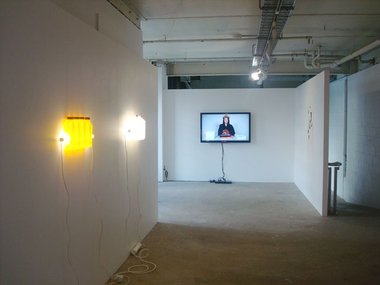

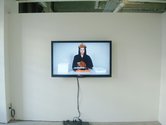
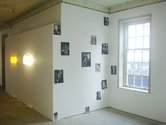

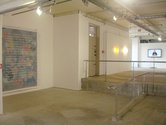

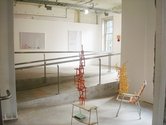


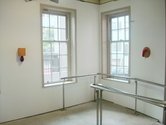

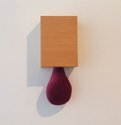



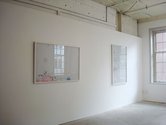
 Advertising in this column
Advertising in this column Two Rooms presents a program of residencies and projects
Two Rooms presents a program of residencies and projects



This Discussion has 3 comments.
Comment
James R Ford, 10:20 a.m. 7 December, 2012 #
I would just like to add that show was not laughing at painting, or saying painting is dead in anyway, more that contemporary male art has moved away from angst laiden masculinity, into areas more delicate and light, with a sense of humour and breadth of medium.
John Hurrell, 10:45 a.m. 7 December, 2012 #
Yes James but is that move news now? That you think it is interests me - just as the nature of what say Mark and Soren are doing does. I mean that sticky poo-like stuff is serious material to handle.
Anyway, maybe painters should start getting a little stroppy. Jump up and down a bit.
James R Ford, 10:59 a.m. 7 December, 2012 #
Haha. This is more of a survey show of what's happening right now, in my opinion. If painters get stroppy maybe I'll curate a show about that...
Participate
Register to Participate.
Sign in
Sign in to an existing account.